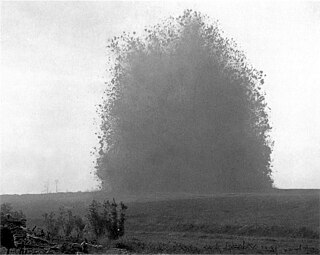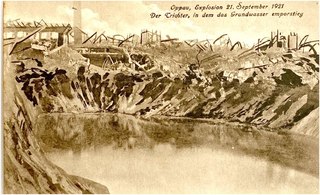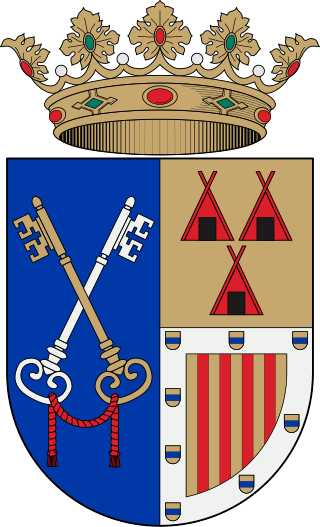On 30 August 2024, near Bororen, Queensland, a utility vehicle crashed head-on with a truck transporting 42.5 tonnes of ammonium nitrate which exploded.
Contents

On 30 August 2024, near Bororen, Queensland, a utility vehicle crashed head-on with a truck transporting 42.5 tonnes of ammonium nitrate which exploded.

At approximately 5:10 am AEST, a utility vehicle collided head-on with a truck transporting 42.5 tonnes of ammonium nitrate near Bororen, Queensland approximately 400 kilometres north of Brisbane, killing the driver of the utility vehicle and seriously injuring the truck driver. [1] [2] The cause of the crash is under investigation. [3]

The truck was transporting 42.5 tonnes of ammonium nitrate, a highly explosive fertiliser. [4] Following the crash the truck caught fire and the driver was pulled from the truck by bystanders. Ammonium nitrate leaked onto the Bruce Highway, a major highway in Queensland. [5] First responders ordered an evacuation of a 2.5 kilometre radius of the crash, [3] and decided to not extinguish the fire because of the inherent risk. [5]
The ammonium nitrate exploded at 9:40 am AEST causing a shockwave that was felt as far as Gladstone, 55 kilometres away from the site. [5] A mushroom cloud rose into the sky and the explosion threw debris 50 metres. [1]
There were no casualties from the explosion. There was minor damage to powerlines in the area and some spot fires. [5] The truck driver was airlifted to hospital. [1]

Ammonium nitrate is a chemical compound with the formula NH4NO3. It is a white crystalline salt consisting of ions of ammonium and nitrate. It is highly soluble in water and hygroscopic as a solid, but does not form hydrates. It is predominantly used in agriculture as a high-nitrogen fertilizer.

ANFO ( AN-foh) (or AN/FO, for ammonium nitrate/fuel oil) is a widely used bulk industrial high explosive. It consists of 94% porous prilled ammonium nitrate (NH4NO3) (AN), which acts as the oxidizing agent and absorbent for the fuel, and 6% number 2 fuel oil (FO). The use of ANFO originated in the 1950s.

The 1947 Texas City disaster was an industrial accident that occurred on April 16, 1947, in the port of Texas City, Texas, United States, located in Galveston Bay. It was the deadliest industrial accident in U.S. history and one of history's largest non-nuclear explosions.

Mitchell Highway is an outback state highway located in the central and south western regions of Queensland and the northern and central western regions of New South Wales in Australia. The southern part of Mitchell Highway forms part of the National Highway A32 B71 corridor, which stretches from Sydney to Brisbane via Dubbo. Mitchell Highway also forms part of the shortest route between Sydney and Darwin, via Bourke and Mount Isa, making it an important road link for the transport of passengers and freight for regional New South Wales and Queensland. The highway is a part of route Alternative A2 between Augathella and Charleville, route A71 and B71 between Charleville and Nyngan, and part of route A32 between Nyngan and Bathurst.
The Ryongchŏn disaster was a train disaster that occurred on 22 April 2004 in the town of Ryongchŏn, North Korea, near the border with the People's Republic of China. At least 54 people were killed, including some Syrian scientists.

Ammonal is an explosive made up of ammonium nitrate and aluminium powder. TNT is added to create T-ammonal which improves properties such as brisance. The mixture is often referred to as Tannerite, which is a brand of ammonal.
There have been many extremely large explosions, accidental and intentional, caused by modern high explosives, boiling liquid expanding vapour explosions (BLEVEs), older explosives such as gunpowder, volatile petroleum-based fuels such as gasoline, and other chemical reactions. This list contains the largest known examples, sorted by date. An unambiguous ranking in order of severity is not possible; a 1994 study by historian Jay White of 130 large explosions suggested that they need to be ranked by an overall effect of power, quantity, radius, loss of life and property destruction, but concluded that such rankings are difficult to assess.

The Oppau explosion occurred on September 21, 1921, when approximately 4,500 tonnes of a mixture of ammonium sulfate and ammonium nitrate fertilizer stored in a tower silo exploded at a BASF plant in Oppau, now part of Ludwigshafen, Germany, killing 500–600 people and injuring about 2,000 more.

Barracas is a Spanish town located in Castellón.
The 2009 southeast Queensland oil spill occurred off the coast of southeast Queensland, Australia on 11 March 2009, when 230 tonnes of fuel oil, 30 tonnes of other fuel and 31 shipping containers containing 620 tonnes of ammonium nitrate spilled into the Coral Sea, north of Moreton Bay during Cyclone Hamish. It happened after unsecured cargo on MV Pacific Adventurer damaged other cargo, causing the spillage. Over the following days, the spill washed ashore along 60 kilometres (37 mi) of coastline encompassing the Sunshine Coast, Moreton Bay, Bribie Island and Moreton Island.
This is a list of significant railway accidents in Queensland, Australia.

The Western railway line is a narrow gauge railway, connecting the south-east and south-west regions of Queensland, Australia. It commences at Toowoomba, at the end of the Main Line railway from Brisbane, and extends west 810 km to Cunnamulla, passing through the major towns of Dalby, Roma and Charleville, although services on the 184 km section from Westgate to Cunnamulla have been suspended since 2011. The Queensland Government was the first railway operator in the world to adopt narrow gauge for a main line, and this remains the system-wide gauge.
Murweh is a rural locality in the Shire of Murweh, Queensland, Australia. In the 2021 census, Murweh had a population of 9 people.
The 1972 Taroom explosion occurred after a truck carrying ammonium nitrate, an explosive and fertilizer, caught fire on 30 August 1972 near Taroom, Central Queensland, Australia. The explosion, on the Fitzroy Developmental Road near Stonecroft Station, 90 kilometres north-west of Taroom, killed three men.

On 20 January 2022, a large explosion occurred along the Tarkwa-Bogoso-Ayamfuri road in Western Region, Ghana, after a truck transporting mining explosives collided with a motorcycle. The explosion levelled the nearby Apiate village, killing 13 people and injuring 200.